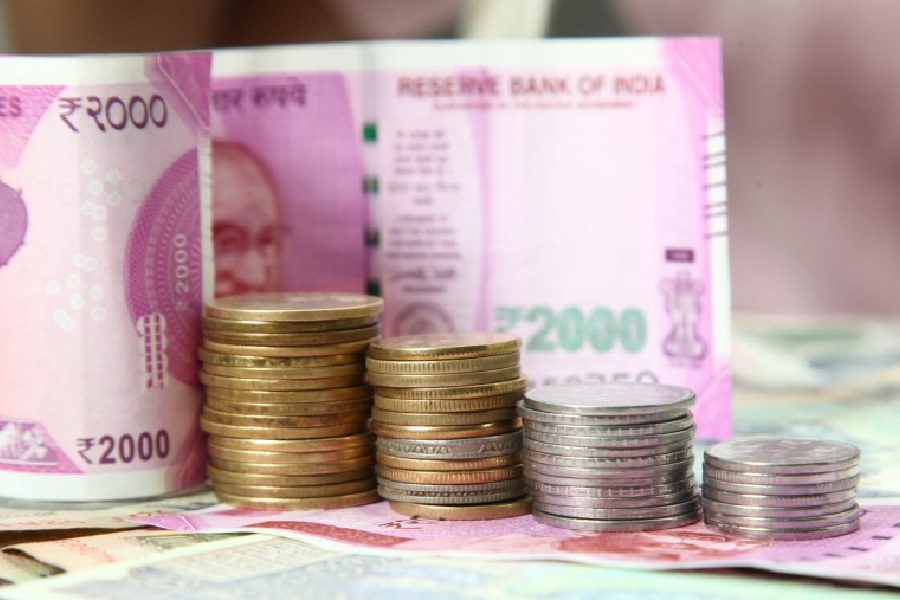The Reserve Bank of India has deferred the implementation of the liquidity coverage ratio (LCR) by a year, in a big relief to banks. The LCR norms will also be introduced in a phased manner.
Banks can now focus on collecting deposits and lending them.
Analysts estimated banks would have to invest nearly ₹4 lakh crore to comply with LCR rules that were first proposed under the regime of former RBI governor Shaktikanta Das.
Banks had also reportedly told the finance ministry last year the norms may even hit credit delivery.
LCR required banks to maintain high quality liquid assets (HQLAs) such as government securities to meet 30 days net outgo under stressed conditions. The RBI had released a draft circular in July 2024, proposing to implement LCR from April 1, 2025.
``Less than two months is too short a window for banks; we will aim for March 31, 2026, but not all norms will kick in at the same time,” RBI governor Sanjay Malhotra said at his first post monetary policy press conference, indicating the rules will be implemented in a phased manner.
“We recognise that just like there are no free lunches, regulation to enhance stability and consumer protection too is not devoid of costs. There are trade-offs between stability and efficiency. We will keep this trade-off in mind while formulating regulations,” Malhotra said.
“It will be our attempt to strike the right balance, keeping in view the benefits and costs of each and every regulation.”
The analysts said this was a sign the new RBI governor may follow a relatively light approach in regulating banks.
Replying to a query on actions taken by the RBI in the past against certain banks, Malhotra said that they were the ones of “last resort”. “...we would not like to use them too often, to be used in the rarest of rare where all other measures have actually failed. We will keep this policy going forward.”
On the curbs on unsecured lending growth implemented through the increase in risk weights in November 2023, Malhotra said the RBI is “satisfied” with its impact. Credit growth under the heads has slowed down, and no more steps to moderate it further are merited at present.
Deputy-governor Swaminathan J. pointed out the RBI does not have any plans to bring any fresh regulatory steps to check microlending, despite the heightened slippages in the sector.
Call money
Malhotra asked banks to participate in the call money market instead of parking their surplus funds with the RBI.
``It has been observed that some banks are reluctant to onlend in the uncollateratised call money market; instead, they are passively parking funds with the Reserve Bank. We urge the banks to actively trade among themselves in the uncollateratised call money market to make it deeper and vibrant for better signal extraction from the weighted average call money rate (WACR),’’ he said.
India’s banking system has been witnessing a liquidity deficit which has been attributed to the advance outflows in December 2024 and the RBI’s intervention in the forex market.
The RBI has announced various measures to address the shortfall. This has resulted in WACR rising above the policy repo rate.
Bankers said that Malhotra’s statement is intended to improve liquidity in the call money market.
bank.in domain
In order to check cyber security threats, the Reserve Bank on Friday decided that Indian banks will have exclusive internet domain name ‘bank.in’ and non-bank financial entities ‘fin.in’.
Malhotra said registrations for ‘bank.in’ will commence from April 2025, and going forward ‘fin.in’ will be introduced.
The decision is aimed at enhancing trust in the financial sector, he said adding the increased instances of fraud in digital payments are a significant concern.
“To combat the same, the Reserve Bank of India (RBI) is introducing the ‘bank.in’ exclusive Internet Domain for Indian banks,” he said.
Meanwhile, the Sensex and Nifty ended lower on Friday as the RBI’s rate cut did not spring any major surprise and investors turned to profit-taking amid foreign fund outflows.
The Sensex dropped 197.97 points or 0.25 per cent to settle at 77860.19. The NSE Nifty declined 43.40 points or 0.18 per cent to 23559.95.











